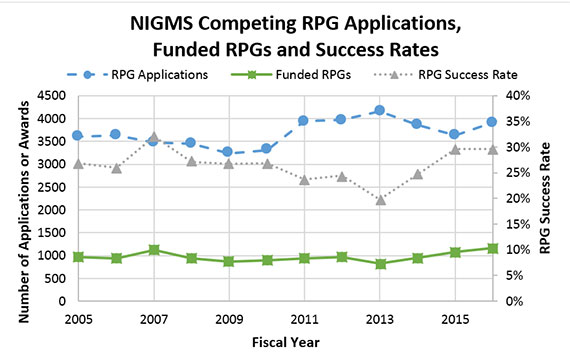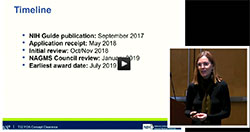One question that has been asked about the Maximizing Investigators’ Research Award (MIRA) for Early Stage Investigators is how awardees will be affected by the fact that they cannot have additional NIGMS research grants. In response to this question, we reviewed the research project grant (RPG) funding history of all 707 Principal Investigators (PIs) who received an NIGMS R01 as an Early Stage Investigator (ESI) between Fiscal Years 2009 and 2015. The PIs were grouped by Year of PI, which ranges from Year 1 to Year 5 (five years is the typical length of an ESI R01 award). Year 1 is the year in which the PI was awarded his or her initial R01, and Year 2-Year 5 represent the subsequent years. The awards and funding history of each PI were confined to Fiscal Years 2009-2015; thus, all PIs are included in the Year 1 group, while those who received their initial R01 in 2013, for example, would only appear in the Year 1-Year 3 groups.
The distribution of NIGMS awards (including subprojects) for these PIs is depicted below.
Adding up the percentages of PIs with two and three awards, Figure 1 shows that the percentage of PIs with more than one active NIGMS award ranges from 2.8% in Year 1 to 13.9% in Year 5. Continue reading “A Historical Analysis of NIGMS Early Stage Investigators’ Awards and Funding”





